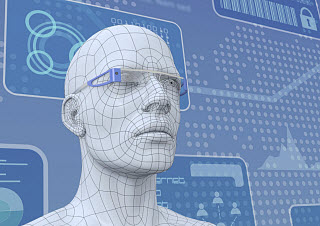A new type of wearable technology could redefine the AR experience.
Andrew Maimone, a University of North Carolina at Chapel Hill PhD student, has developed augmented reality (AR) glasses that would allow users to digitally interact with the real world, except Maimone’s glasses are sleek, compact, and light and are realistically wearable and less of a “gimmick” in comparison to conventional AR devices.
The new AR glasses provide a wide field of view.
Maimone commented that while it is possible to utilize a tablet or a even a smartphone to call up a virtual place and character and superimpose it on the real world via a small mobile screen, this experience is not “very compelling” because the experience does not occur through a person’s vision. The smartphone or tablet only allows the user to look at the virtual place through a small window.
On the other hand, traditional augmented reality glasses are bulky due to several components that are required to make the technology work, such as lenses, waveguides, reflectors, beam splitters, and additional optics that relay a digital image to the eye and place it at a distance where it can be focused on by the eye. Unfortunately, all of the bulk this tech creates can limit a person’s field of view.
Maimone’s device is called a Pinlight Display and he has been working on this device in collaboration with three researchers from the University of North Carolina and two from Nvidia Research. The Pinlight Display does not rely on standard optical components. Instead, it utilizes an array of “pinlights”, which are essentially bright dots.
Maimone explains that “A transparent display panel is placed between the pinlights and the eye to modulate the light and form the perceived image.” He added that “Since the light rays that hit each display pixel come from the same direction, they appear in focus without the use of lenses.”
Early prototypes of the augmented reality Pinlight Displays have demonstrated 100 degree fields of view.
Currently, the best commercial augmented reality glasses only offer a field of view of up to 40 degrees, while Maimone’s glasses have demonstrated fields of view of 100 degrees or higher. While this is no doubt impressive, the present prototype is not without its problems. It currently has image quality and low resolution issues. Maimone says that the next step is to work on improving these elements. He firmly believes, however, that with the proper engineering and research, the technology could be made into something realistic for use in everyday life.

 The patent application reveals relatively normal looking spectacles with a thick frame that features a display apparatus, which is tucked on the inside and is attached to the right arm of the glasses near the hinge. This would not only hide the projector, but make the
The patent application reveals relatively normal looking spectacles with a thick frame that features a display apparatus, which is tucked on the inside and is attached to the right arm of the glasses near the hinge. This would not only hide the projector, but make the 